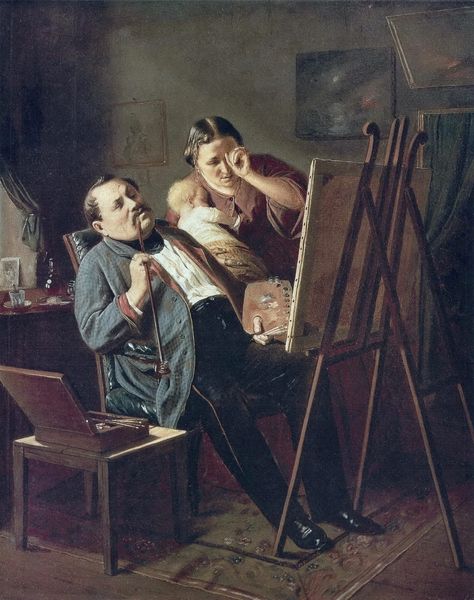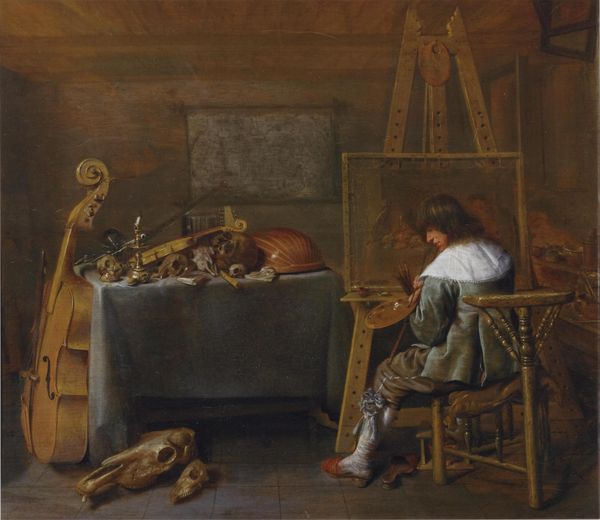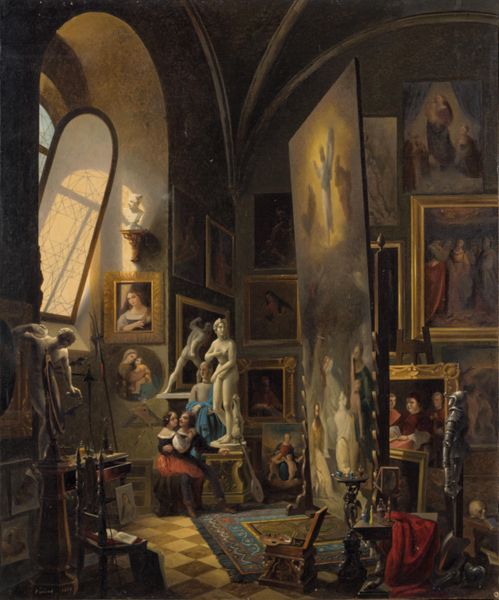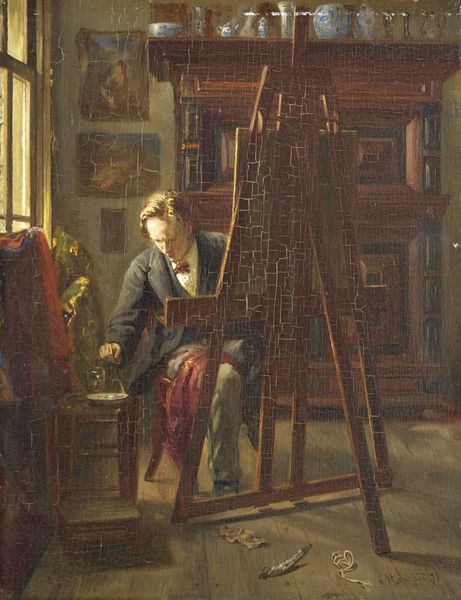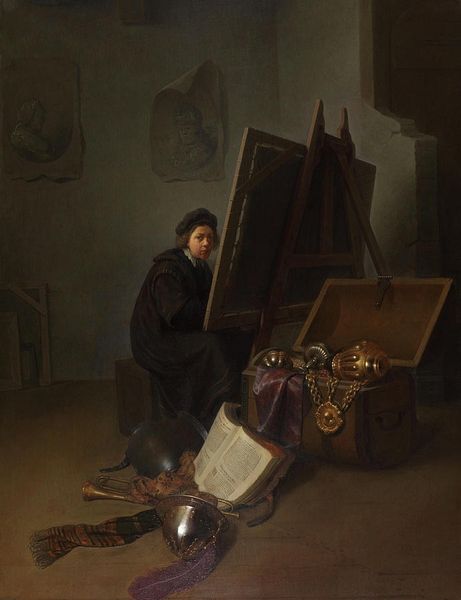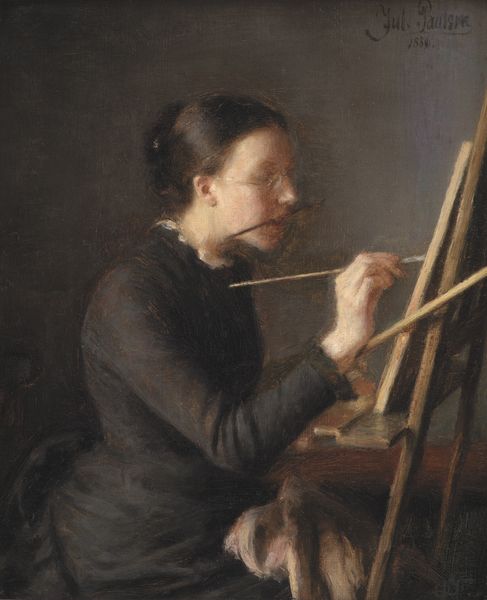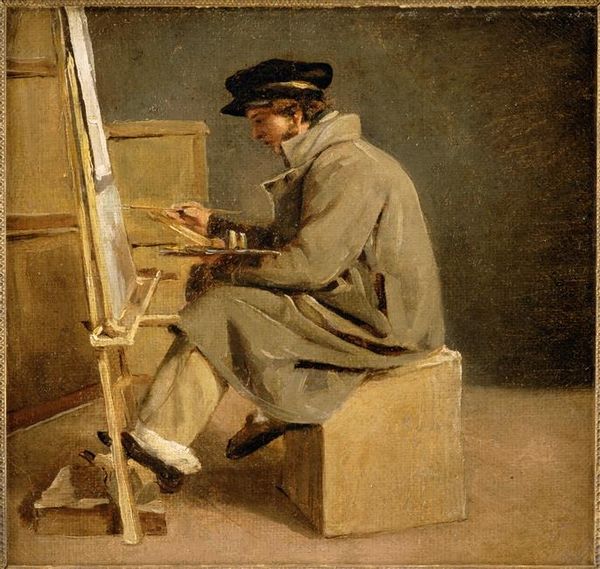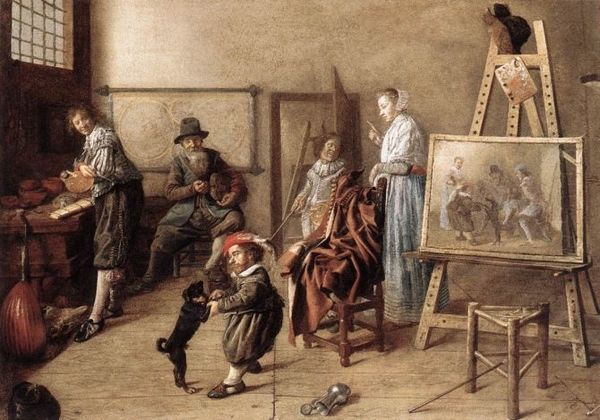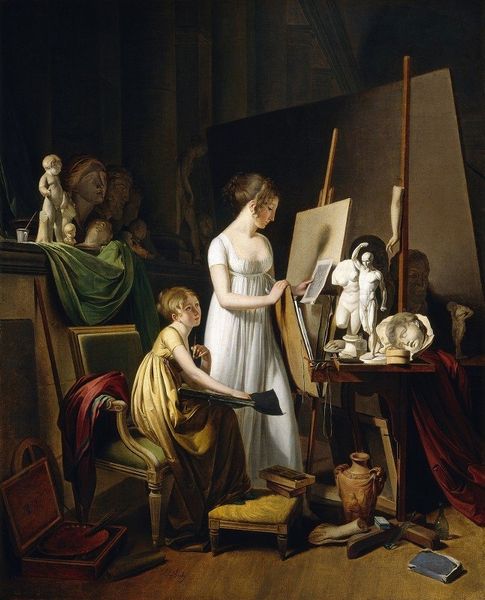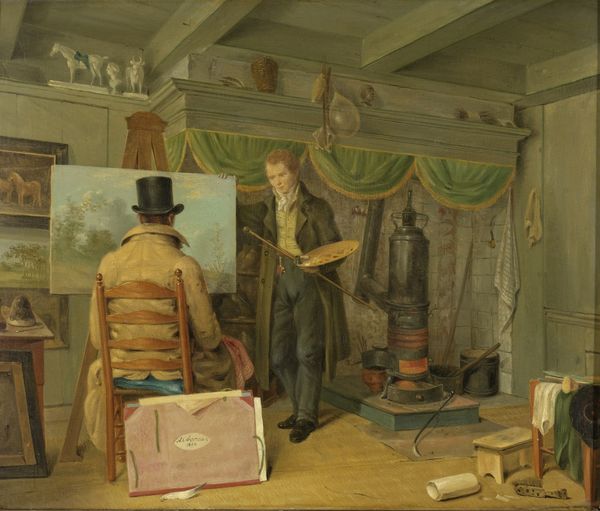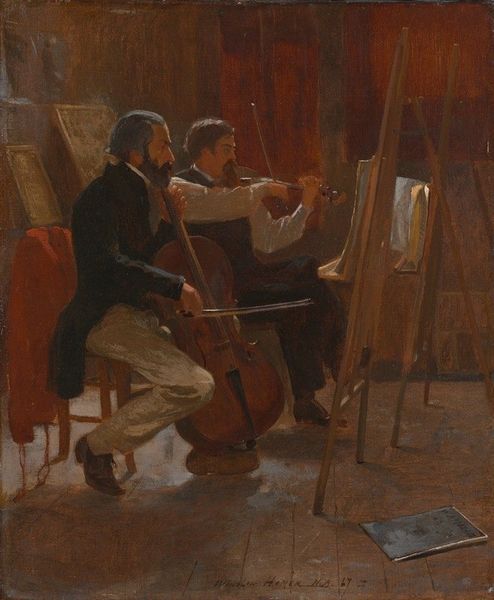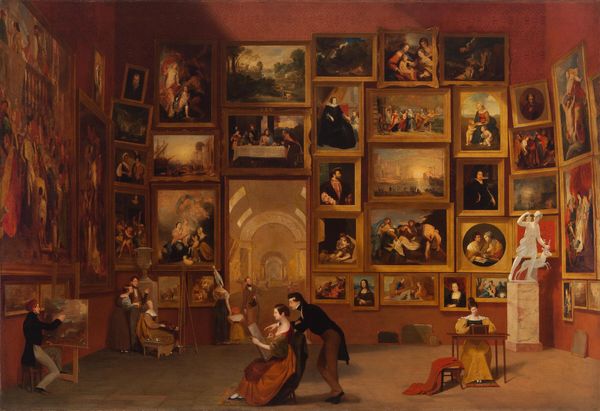
painting, oil-paint, canvas
#
portrait
#
character portrait
#
self-portrait
#
painting
#
oil-paint
#
canvas
#
romanticism
#
genre-painting
#
portrait art
Dimensions: 121.5 cm (height) x 101 cm (width) (Netto), 138.7 cm (height) x 119.5 cm (width) x 7.9 cm (depth) (Brutto)
Curator: Ah, Ditlev Blunck's painting, "The Battle-Painter Jørgen Sonne in his Studio", from around 1823 to 1825. Editor: My initial impression is clutter. The space feels crammed with objects and conflicting symbols, creating a surprisingly intimate view into an artist's private world. Curator: Precisely. Note the artist within the artwork; Jørgen Sonne, pipe in mouth, holding palette, apparently at work on his own canvas. Blunck masterfully layers planes of representation here. He is painting Sonne, who is ostensibly painting an action piece. The brushstrokes are smooth, almost academic. Editor: It is a curious blend of order and chaos. The carefully arranged objects - a uniform, a model, and various painting implements - speak to a controlled artistic process. Yet, the jumble of items on the floor, and that resting dog, suggests a more relaxed, human side to creation. What can you tell me about how the artist builds a setting? Curator: The composition relies on a subtle geometric structure, wouldn’t you agree? Lines subtly echo and parallel within the artwork. For example, the artist's arm directs the viewer's gaze to the framed picture hung behind him on the wall, as well as the golden horn on the canvas behind him, while the military clothing resting to his right, gives the piece an incredible tension. The palette itself is placed centrally in the piece. Editor: Yes, there's a very palpable tension. The military dress seems almost like a relic, perhaps symbolizing past conflicts, but certainly informing how people thought of Sonne at the time. The portrait itself raises an important discussion on the professional role of artists in the early 19th century, specifically as Romantic ideals were spreading. Curator: Indeed. What elevates the work for me, however, is Blunck's understanding of contrasting textures: the hard brass, the soft fur, and the various textiles... they each add to the overall visual harmony. There is no area devoid of details. The way Blunck carefully modulates each visual object. Editor: Looking at it this way adds an additional layer of meaning to its importance to us now. From a social viewpoint, the painting highlights a tension between the artistic sphere and the societal expectation of artistic contributions. Curator: Blunck uses the material properties and forms to articulate deeper aesthetic values within his portrayal, which resonate far beyond his immediate era. Editor: Absolutely. I find myself reconsidering my initial impressions, appreciating the complexity within what I first perceived as "clutter.” Thanks for that insight.
Comments
statensmuseumforkunst almost 2 years ago
⋮
Blunck has depicted fellow artist Jørgen Sonne at work, set among artistic disarray, humorously demonstrating the challenges that young, struggling artists face. As a battle-painter Sonne must paint uniformed soldiers, weapons, horses and instruments, but being short of funds he must use substitutes such as a scarecrow-like figure instead of a real soldier and a horse skull instead of a horse. The artist must rise above the shortcomings of reality to create his motif. We do not see what Sonne is painting, but presumably his genius (as they said at the time) lets him produce a perfect work of art. Wilhelm Bendz painted a comment on his friend’s work: it shows Blunck standing in front of a mirror to assess his sketch for this painting.
Join the conversation
Join millions of artists and users on Artera today and experience the ultimate creative platform.
